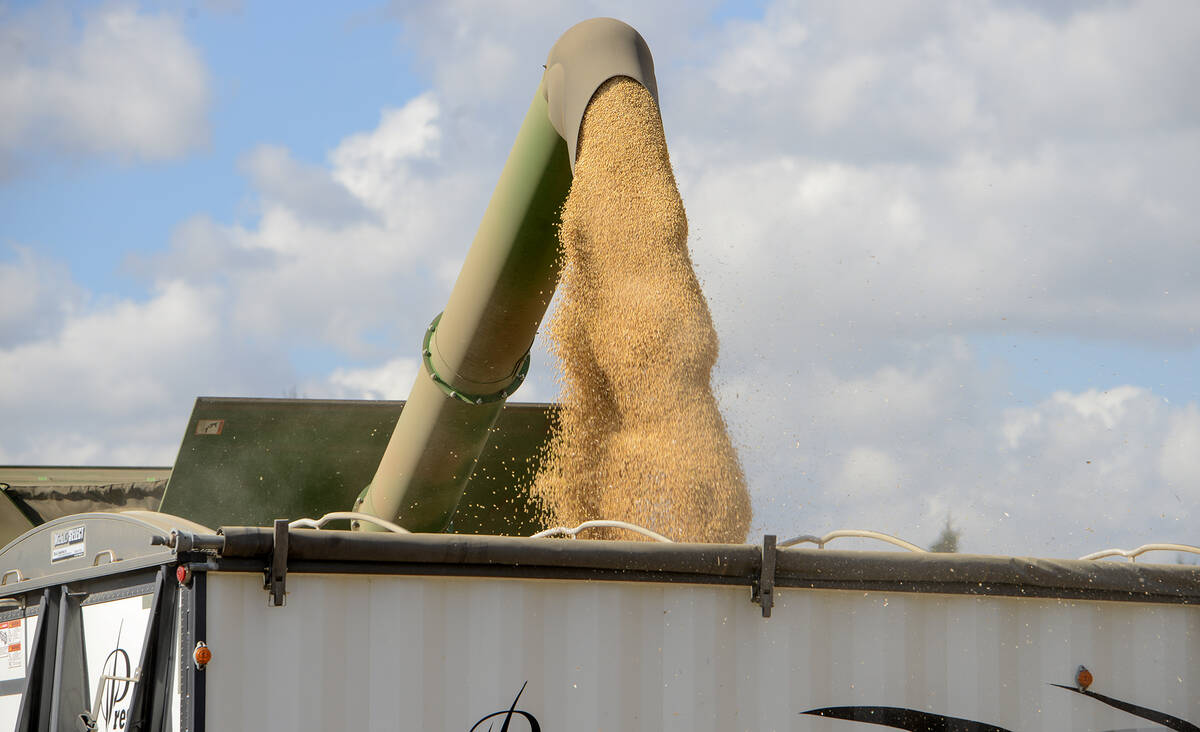World wheat supply is expected to hit record levels in 2017-18 for the fourth year in a row, but remove China from the equation and next year’s global wheat carry-out would be the lowest in four years.
The U.S. Department of Agriculture recently projected world wheat ending stocks would rise to 258.29 million tonnes in 2017-18, slightly larger than its revised 2016-17 target of 255.35 million tonnes, but well above the new-crop trade estimate of 246.15 million.
China has been notorious over the past decade for producing and storing large quantities of grain in its effort to be self-sufficient. Wheat stockpiles have now grown to staggering levels, but government support prices for the grain ensure that farmers continue to produce at the same rate, thus worsening the problem.
Read Also

Grain markets hungry for U.S. data
The U.S. government shutdown meant that futures markets were left without robust grain supply information
The East Asian country is the world’s largest wheat producer, but it barely participates in the global marketplace. USDA expects China to import three million tonnes of the grain in 2017-18 and export 0.8 million — quantities that pale in comparison with the 131 million tonnes it will harvest.
China’s wheat stocks-to-use ratio — which measures both supply and demand — will climb above the 100 per cent mark in 2017-18 for the first time ever to 110 per cent. This means the country will have enough wheat in storage to fulfil total demand for more than one year, assuming it is all still usable.
By comparison, the United States — which is currently considered to be in a wheat excess situation — has an estimated stocks-to-use of 52 per cent for 2016-17, but it is expected to fall to 42 per cent in 2017-18.
The world still has a lot of wheat with or without China. But without China, world wheat supply is actually tightening instead of expanding.
At the end of 2016-17, China will be left holding 43.4 per cent of the global wheat supply. USDA predicts this percentage will shoot to 49.6 in 2017-18, which would be China’s largest-ever share.
Given that half of the world’s wheat supply is locked up in China and inaccessible to the world market, it is safe to remove the country from the world balance sheet in order to better examine effective wheat supply.
As it stands, world wheat carry-out is set to increase three million tonnes on the year in 2017-18, but when subtracting China’s portion, carry-out would actually decrease by more than 14 million tonnes and represent the smallest volume since 2013-14.
With China still in the picture, world stocks-to-use is 28.3 per cent, the heaviest since 2001-02. Removing China’s details from the balance sheet yields an effective ratio of 16.4 per cent, which would be the lowest in a decade. The 2016-17 ratio currently sits at 18.2 per cent, and the 10-year high of 22 per cent was notched in 2009-10.
In 2016, China removed minimum price supports for several crops including corn, which has also been running up total world supply in recent years. The policy was discontinued in order to let prices self-regulate in the marketplace and to reduce the burdensome stockpiling.
But Beijing did not axe support prices for wheat or rice at that time. Back in March, the government announced plans to improve the policy for setting support prices for the two grains and that state grain stockpiles will be cut down, though the strategy is not yet apparent.
As such, farmers have no incentive to produce less wheat. Planted area in China has been very steady over the years and that trend has continued into the 2017-18 harvest. USDA predicts Chinese farmers will harvest the largest area in five years, just a sliver above last year.
USDA also projects that China’s total domestic use will fall 2.5 million tonnes on the year, rendering the slight bump in production totally useless. This further demonstrates how badly the country’s broken support price system needs reform.
The corn policy fix seems to have made some headway, as planted area will fall to a six-year low this spring and total domestic use should rise substantially. USDA expects that these adjustments will cut China’s corn carry-out by 20 per cent on the year.
China will be holding 42 per cent of the world’s corn stocks by the end of 2017-18, which is a seven-year low and a notable reduction from the recent 2015-16 high of 52 per cent.















